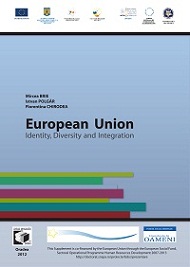Cultural Identity, Diversity and European Integration. Introductory Study
Cultural Identity, Diversity and European Integration. Introductory Study
Author(s): Mircea Brie, Florentina Chirodea, Istvan PolgarSubject(s): Politics / Political Sciences
Published by: Editura Universitatii din Oradea
Keywords: identity; diversity; border; European Union; culture; pluralism
Summary/Abstract: European cultural identity reflects both the image of homogeneity and that of cultural diversity. This double perspective gives the integration process a complex dimension which makes us take into consideration not only the European unitary ensemble but also the local, regional, or national structures. “Identity revenge”, “the feeling of return to historic, national and cultural identity” are terms that ask for redefining the national and European identity space that was forced to open to the new geo-political, historical and cultural configurations. Beyond any approach, the image of the European culture is provided by the association of the concepts people – culture – history – territory. They confer a certain local specificity due to their characteristics. From this point of view, we can identify besides a European culture, a cultural area of local, regional and national specifics. Thus, we identify at least two cultural identity constructions on the European level: a culture of cultures, that is a cultural area with a strong identity on the particular, local, regional, or national levels, or a cultural archipelago, that is a joint yet disrupted cultural area. Irrespective of the perspective, we cannot deny the existence of a European cultural area, whether a diversity cultural area, or one of “disrupted continuity”. Cultural diversity, pluralism and multiculturalism are elements specific to the European area. The European integration process is complex; it does not impose and is not conditioned by the idea of cultural unity, or the existence of a common culture including all Europeans. Specificity and diversity are precisely the means of intercultural dialogue between European peoples. Each European society has to find their own integrating solutions depending on traditions and institutions.
Journal: Analele Universităţii din Oradea. Relaţii Internationale şi Studii Europene (RISE)
- Issue Year: 4/2012
- Issue No: Suppl.
- Page Range: 7-20
- Page Count: 13
- Language: English
- Content File-PDF

